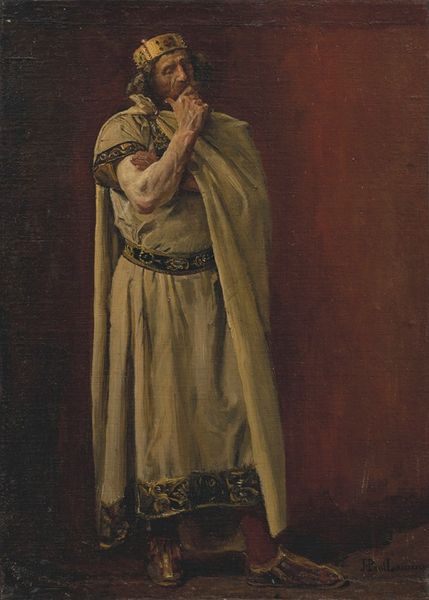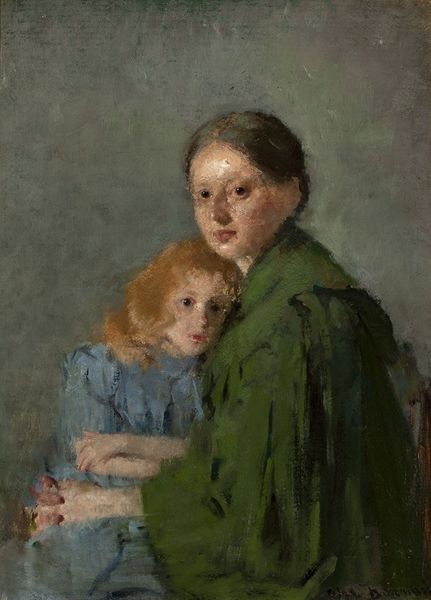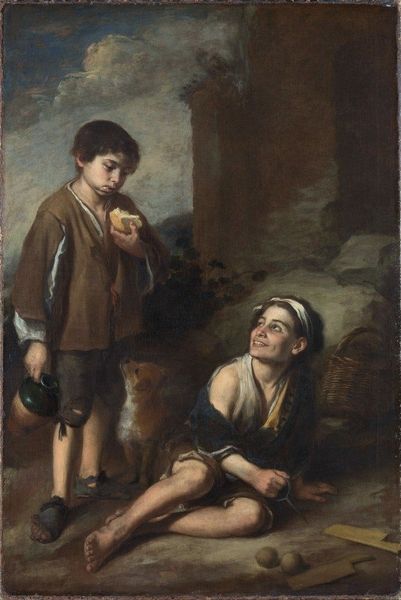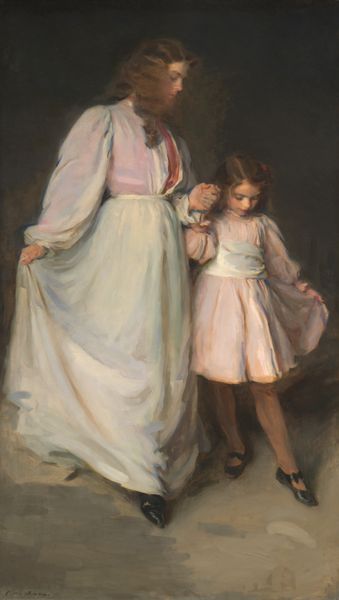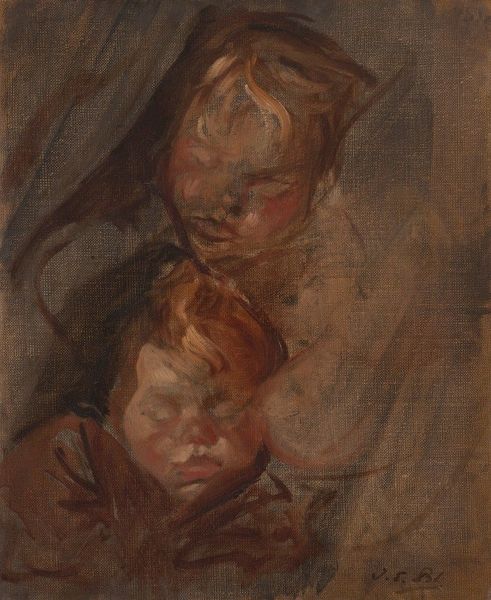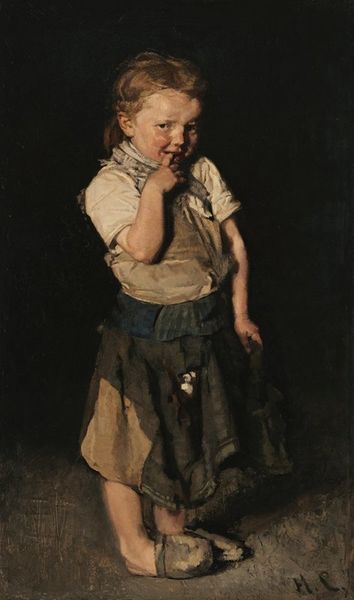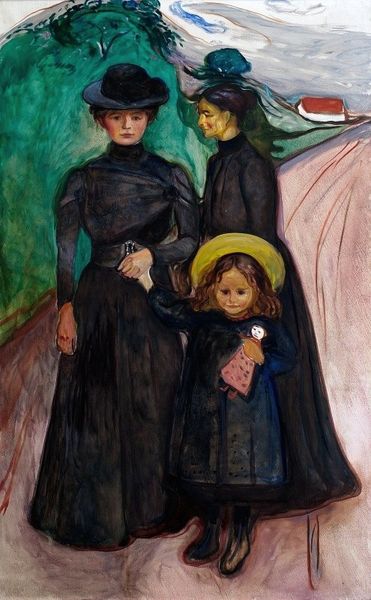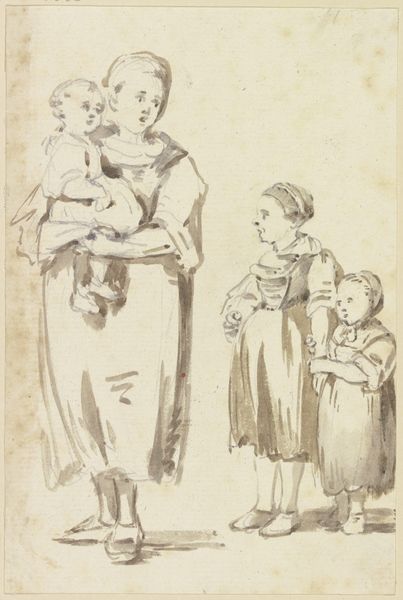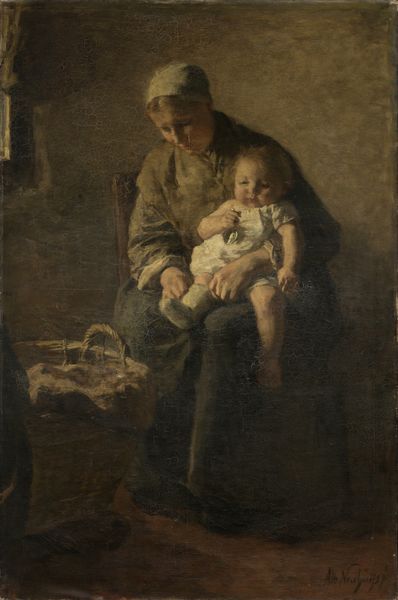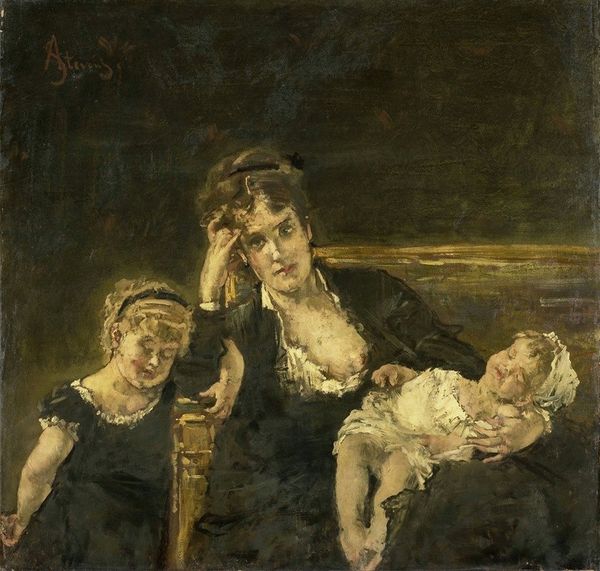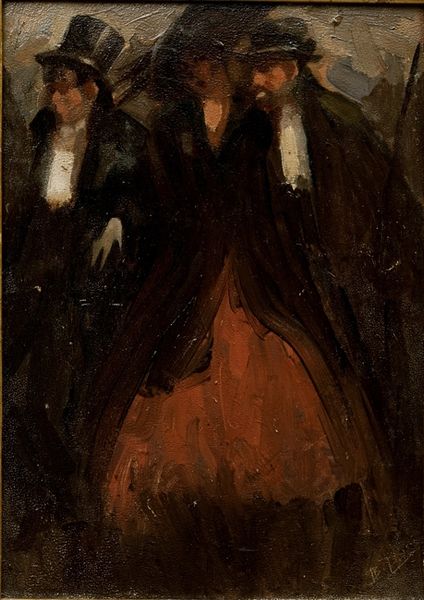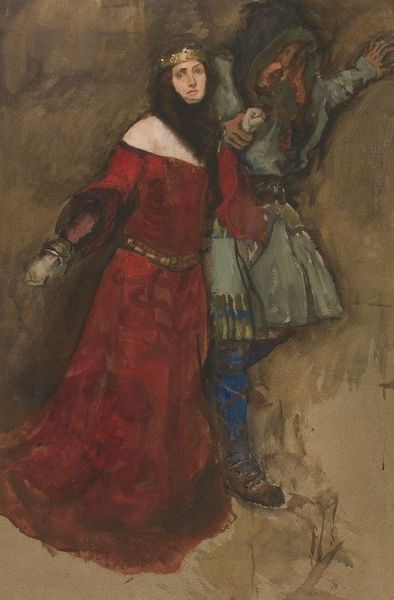
Copyright: Public Domain: Artvee
Curator: Jean-Paul Laurens offers us a window into history with his oil painting, "Femme mérovingienne et deux enfants," likely completed between 1874 and 1885. It’s a fascinating representation of a Merovingian woman with her children. Editor: It certainly evokes a heavy, melancholic air. The colors are so muted, like looking through aged glass, or maybe a bruise forming under the skin. Curator: Yes, there is a palpable somberness to it. The composition is also quite striking. Notice the triangular structure, with the mother at the apex. This draws our eye to her face and emphasizes her stature and presumed strength. The children flanking her create a sense of unity, or perhaps of a family burdened. Editor: I think burdened is definitely the right word. I get this sense of weary defiance from the woman’s expression, doesn’t it remind you of resilience? It’s like she is saying "We’ve been through hell, but we are still here". And those intense stares of the children just magnify that feeling, don't you think? Curator: Precisely! Laurens was known for his history paintings that explored themes of power, injustice, and resistance. Semiotically, the children's gazes communicate vulnerability while adding to the woman's air of defiance. Note also her dark attire set against the darkness surrounding them. It can be viewed as protective, an element contributing to a stark depiction of a family’s plight. Editor: I do wonder about that wounded leg of the boy. Is that a detail plucked directly from a specific Merovingian saga? Curator: It certainly might be. Laurens was known for his academic rigor. It injects an undeniable level of realism into the composition, forcing us to consider the real-world challenges these figures faced, whether the details are historically verified, or imagined. The inclusion underscores the harshness of the historical moment. Editor: This really sticks with you, doesn't it? I walked in thinking "historical painting," expecting something bombastic and overblown. Instead, there's this quiet, intense humanity to it. Curator: Agreed. The artwork stands as a reminder that behind the grand narratives of history are individual stories of survival, endurance, and family.
Comments
No comments
Be the first to comment and join the conversation on the ultimate creative platform.

